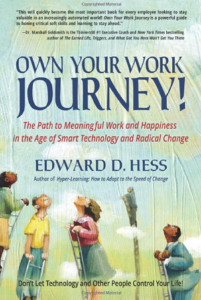Carol Schultz’s new book follows an interesting trend overtaking the modern workplace by storm. With the elaborate and dynamic corporate philosophies she promotes in Powered by People: How Talent-Centric Organizations Master Recruitment, Retention, and Revenue (and How to Build One), Schultz makes strong articulations for how redirecting priorities when it comes to workplace hiring strategy is in desperate need of order, should one’s enterprise survive and thrive into longterm productivity today. But the ultimate takeaway from her sub-arguments on this topic boils down to one simple thing: to listen.
“Listening requires people to overcome whatever other elements are vying for their attention, be it a beautiful view or a monotone speaker putting them to sleep. A roomful of bobbleheads can nod along to your presentation just as well as a room filled with people merely hearing you make noise while their minds wander elsewhere. The return is the same for both,” she writes. “…Believe me, I get miscommunication…Most people do not understand the critical nature of effective communication. Communication is a complicated circuit to close, involving every participant. That’s why a true culture of feedback isn’t easy to create. The culture of genuine feedback must start in the CEO’s office, because if just one person resists, it’s dead on arrival. One gap in the feedback loop breaks the whole process. The CEO must be very clear that the organization will build that culture of feedback and then provide the details on what it means, why they’re doing it, and what to expect.”
AMAZON: https://www.amazon.com/-/es/gp/product/B09ZZC81J6/ref=dbs_a_def_rwt_hsch_vapi_tkin_p1_i0
It’s an unusual sort of angle Schultz takes when you think about it. A lot of people in her position literarily speaking take the opposing approach. Start small, before moving the reader up the ideological ladder prior to their introduction to the conceptual complexities in entirety, at least with respect to the lens the author provides. Here, Schultz introduces some of the headier themes about proactive hiring practices first, before delving into a certain universality: the tenets of proactive communication. “The entire organization must make an intentional effort, especially if feedback and communication have been poor in the past. New habits must be made, and that takes work. Without that collective effort to create a culture of feedback, there is zero chance that the team will be on the same page when it comes to the company’s vision,” she writes. “…Write down your vision statement and give it to people.
If someone reads your vision statement, would they know it’s you? Would they recognize your company in it? Would your own employees recognize the company in the vision statement? Write down that vision statement and get your leaders on the same page about it, both in understanding and agreement. Do the same with your mission statement. If you don’t, everyone from your top leaders to your frontline managers will be misaligned because there’s no well-defined target. When pressed, they’ll be unable to clearly state the direction the company is headed, the company they’re supposed to be leading. Leadership without a clear destination will take you somewhere, but probably not where you want to go.”
Cyrus Rhodes



























